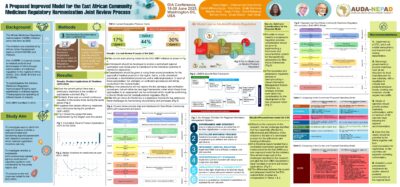Objectives
Methods
Results
Conclusion
- NRAs to grant marketing authorisation within target timelines: This should be within a maximum of 90 calendar days following the regional recommendation and submission of application to the agencies. Data from the regional reviews should be provided to the NRAs together with their recommendation for registration so that countries can expedite marketing authorisation.
- Implement the Sustainability Plan: This plan which was approved by the Ministers of Health in 2024 should be implemented to ensure that the EAC-MRH Initiative is self-sustainable and not dependent on donor funds.
- Set number of Cycles for the Review Process: The time points for manufacturers to respond to queries should be 60 calendar days for the first queries and 30 calendar days for the second query. The review cycle should be reduced from three or four cycles to two cycles.
- Implement Inter-REC Reliance: This should be implemented to fast track review timelines. The work-sharing pathway should allow for possible reliance on decisions from other regional joint assessments
- Communication with Applicants: It is important to conduct stakeholder consultations in order to attract more applications. It will be helpful to perform online webinars to attract new applicants and to create an awareness of the joint review sessions.
- Implement a Regulatory Information Sharing Portal: The MRH programme should publish all recommended products on their website and implement the AMRH Regulatory Information Sharing Portal (RISP) that will enable the Initiative to share regulatory information and knowledge exchange on the continent.
This poster by Nancy Ngum, Chimwemwe Chamdimba, Dedith Mbonyingingo, Fred Siyoi, Emile Bienvenu, Mawien Atem, Adam Fimbo, David Nahamya, Burhani Simai, Stuart Walker and Sam Salek was presented at the 2025 DIA Global Annual Meeting, 16-20 June 2025, Washington DC, USA.

